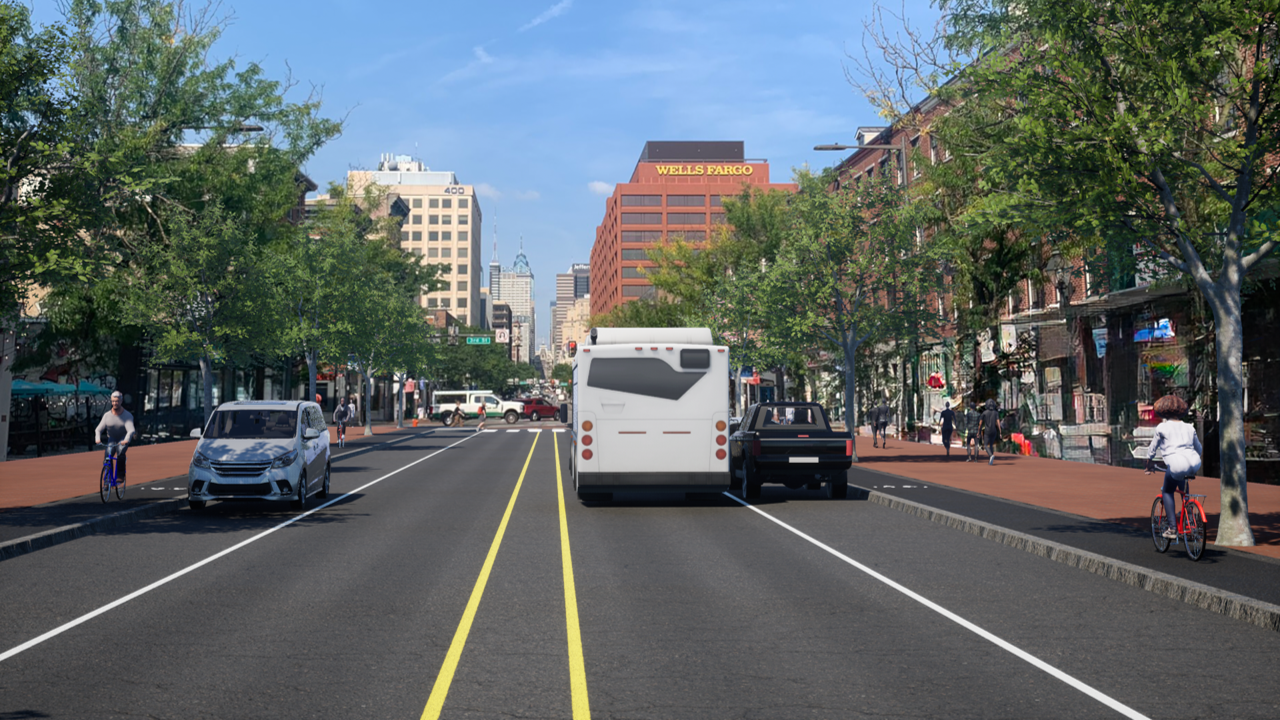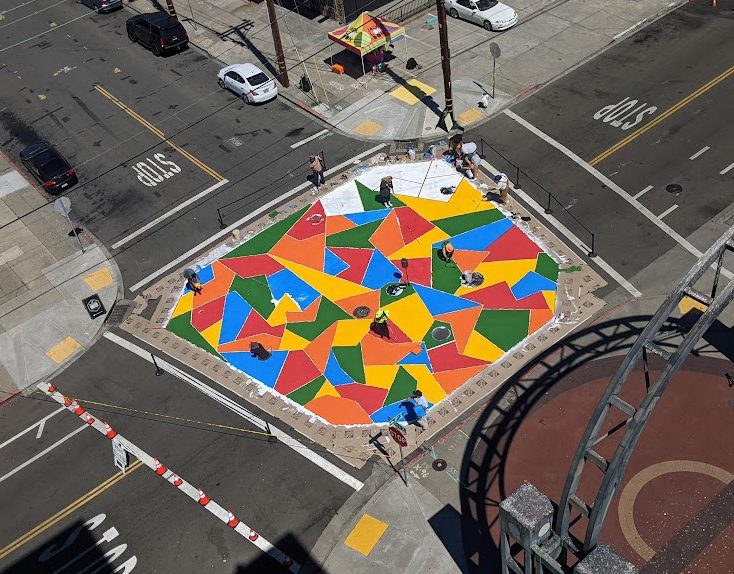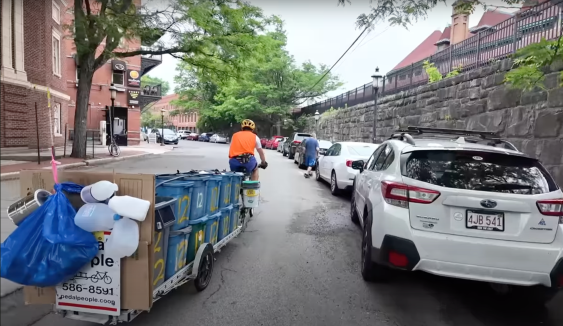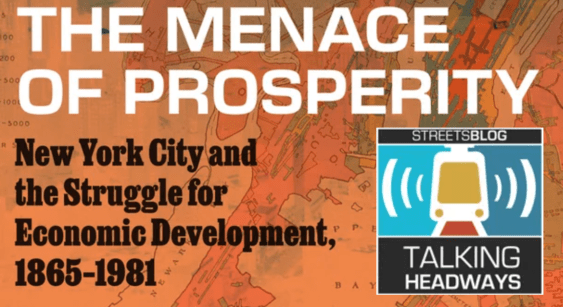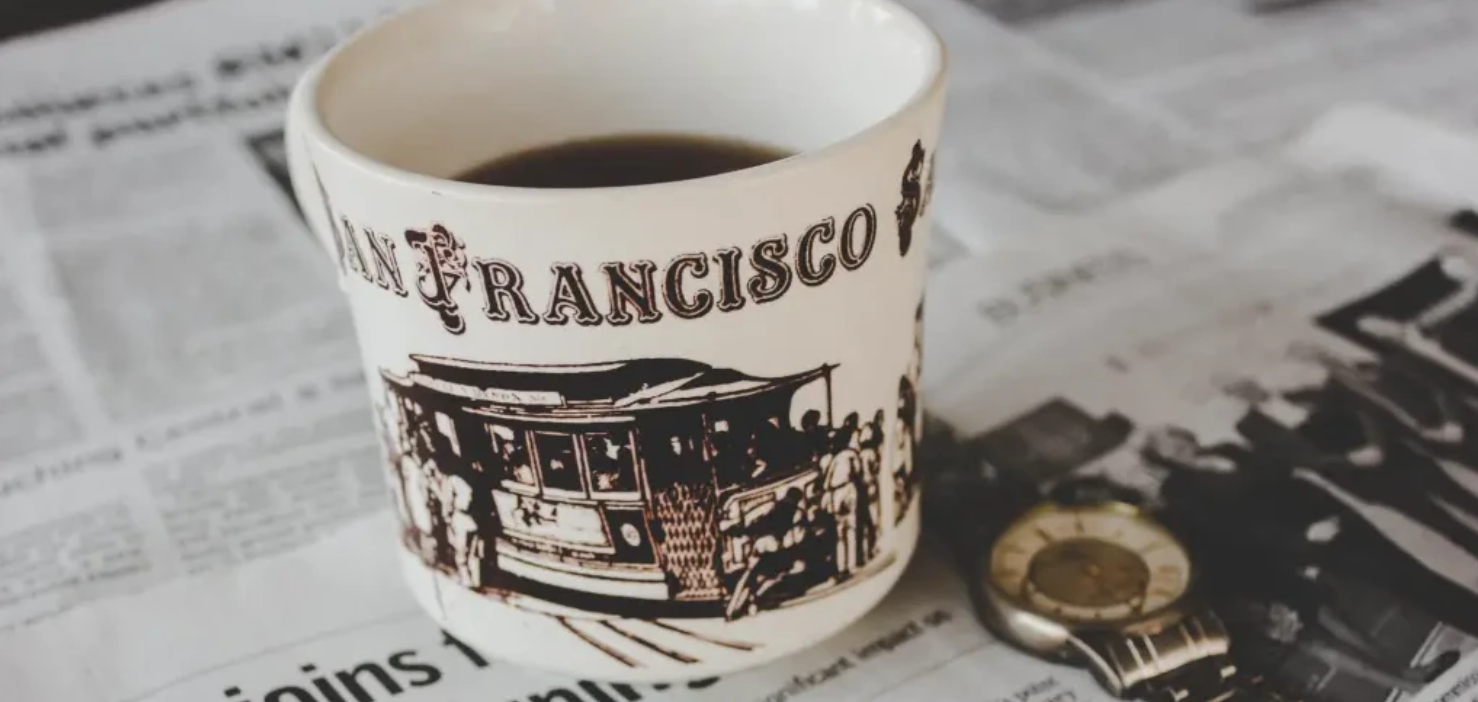Crews recently removed fences, revealing a completed section of sidewalk-level bike lane on Market Street from 5th to 6th. This is part of a larger project to make Market Street safer.
From the city's construction page:
...project will make multimodal safety improvements on Market Street between 6th Street and 2nd Street. The project includes:
- Sidewalk-level bike lanes.
- Concrete bus boarding bump outs.
- Left turn lanes.
These changes will better serve all street users, whether they are walking, biking, driving, or taking transit. Construction work is anticipated to begin in 2024. The project is expected to be completed in time for celebrations of the country’s 250th birthday in 2026.
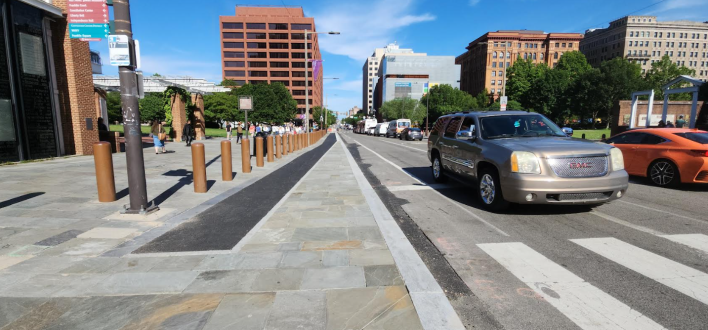
The project is contracted to cost $16 million. "These safety improvements, including the new pedestrian plaza, will create a welcoming public space for residents and a destination for 2026 tourists as well as a hub of activity for years to come," said Mike Carroll, Deputy Managing Director, Transportation and Infrastructure, in a statement.
Unfortunately for San Francisco cyclists, Carroll works for Philadelphia's transportation department. And this story is about the other Market Street—the one in Philly.
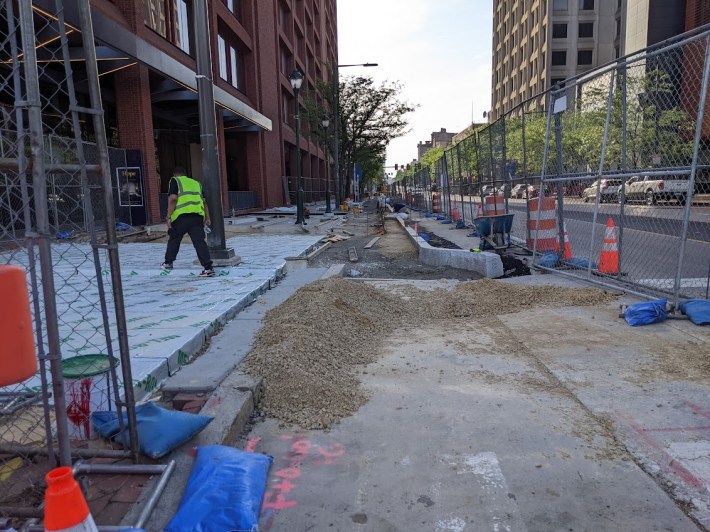
Coming out of the Independence Day holiday had me thinking about that city where the country started—and how the recent history of its Market Street has departed from San Francisco's. Back home, work continues on the Bummer Market Street Plan, which won't have any safety features for cyclists.
It's not a coincidence that the streets have the same names. Market Street in San Francisco was inspired by and named after Philly's. However, "Certain that San Francisco would one day be grander than bustling Philadelphia, O’Farrell made our Market Street 120 feet wide—20 feet wider than Philly’s," wrote Jeffrey Tumlin in a 2011 piece on SPUR's website about the history of the streets. Both Market Streets, by the way, have major bus lines and heavy and light rail transit underneath.
The car ban on San Francisco Market Street, while a big improvement for safety and bus reliability, didn't go far enough. It launched with too many exceptions: taxis, city cars, and delivery trucks are still allowed at all hours. But no physical deterrents were made to keep cars off, making it too easy to backslide. Now autonomous cars are coming to Market Street. How long will it be until Uber and Lyft are back?
Even if the car ban were expanded and maintained, mixing buses and delivery trucks with cyclist (the largest and heaviest vehicles with the smallest, most vulnerable) should always be a non-starter. It should be obvious why this is not safe.
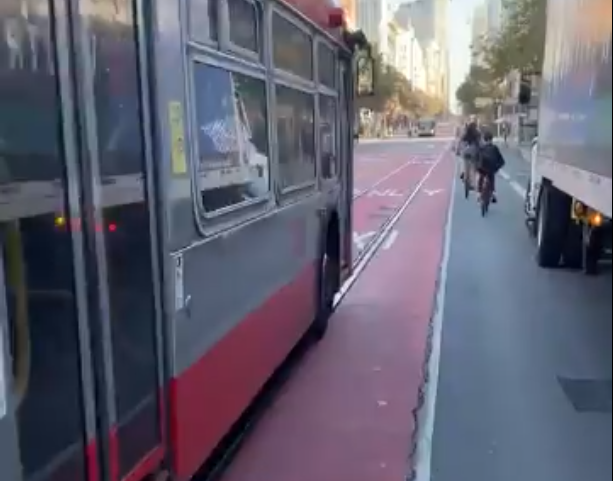
But it's not too late to follow Philadelphia's example. San Francisco actually has huge advantages. As mentioned, San Francisco's Market Street is 20-feet wider. And it already has transit boarding islands. With its super-wide sidewalks and four lanes to work with, San Francisco can either divide and/or extend the sidewalk as Philadelphia is doing, or it can carve out space from the street for physically protected bike lanes. But we know all this: that's what was supposed to get done under the "Better Market Street" project that was shortsightedly cut during COVID. That was one of the worst decisions in the history of San Francisco streets. It was never really about money, considering the street is getting rebuilt anyway and there are many low-cost ways to build protected bike lanes. Moreover, Philadelphia has a smaller city budget with nearly twice the population of San Francisco.
I really hope someone in San Francisco City Hall can still save the Better Market Street project. If Philly can find space for bikes on its Market Street, San Francisco can too.
